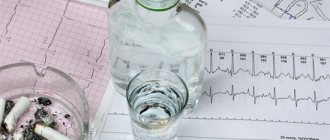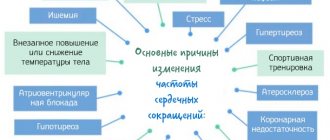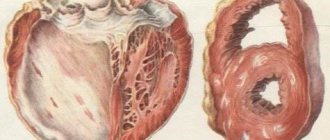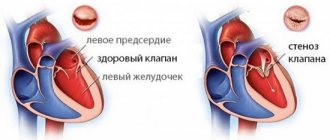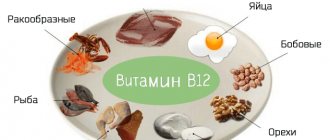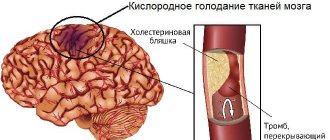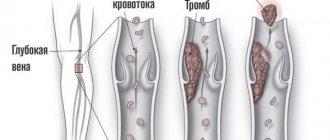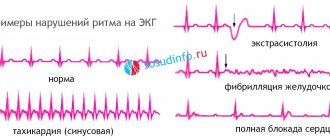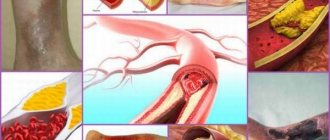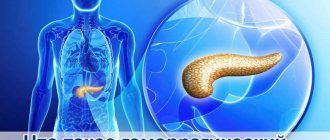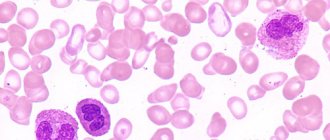Diseases of the cardiovascular system vary in type, characteristics and risks of fatal outcomes.
Many do not cause visible discomfort until a certain point and are discovered by chance during a thorough diagnosis. In approximately 60% of cases we are talking about acquired pathological processes.
The described condition also applies to these. Pacemaker migration is a deviation during which there is a spontaneous movement of electrical activity from the right atrium to other areas of the muscular organ. But in the ventricles - extremely rarely.
Pacemaker migration is not considered an independent diagnosis; moreover, specific symptoms do not exist. The patient’s sensations depend on the underlying condition that led to the development of this symptom. There can be a lot of options: from neurogenic pathologies to cardiac abnormalities themselves.
Treatment is carried out under the supervision of specialized specialists, lifelong maintenance therapy is possible. The point is to eliminate the root cause, but it is not always possible to radically influence the etiological factor.
Despite the threatening name, the deviation itself poses minimal danger. It is necessary to evaluate what is behind it and then predict the outcome.
Development mechanism
The pacemaker of the heart is a dense accumulation of active cardiomyocyte cells that can be spontaneously excited.
Their main function is to generate a bioelectrical impulse that passes throughout the entire muscular organ and causes myocardial contractions.
Without this, there can be no normal blood circulation; as soon as the process weakens, generalized hemodynamic disturbances occur, fraught with imminent death. Another name is sinus node. It is located in the upper segment of the right atrium.
If the functioning of cardiac structures is disrupted by the type of pacemaker migration, the signal source moves to other chambers, including the possible involvement of the ventricle, atrioventricular node (this anatomical structure comes into play when the functioning of the sinus node is disrupted, as an auxiliary element, in its normal position it is responsible for the distribution of momentum).
Unlike atrial fibrillation, when the signal is chaotic and produced in many parts of the heart at once, migration is accompanied by regular contractions and a single source of impulse, albeit displaced.
In this case, the intensity of the produced stimulus may be insufficient for the full functioning of the myocardium.
In such a situation, there is a significant risk of fibrillation, flutter, atrial extrasystole, and other dangerous arrhythmias that can lead to cardiac arrest.
Pacemaker migration on an ECG in a child
Detection of pacemaker migration on a child’s ECG is often discovered by chance during a routine examination. Every parent needs to know the dangers of cardiac dysfunction and how to get rid of the problem.
The concept of the cardiac conduction system and pacemaker migration
To better understand what the development of cardiac pacemaker migration is, it is necessary to have knowledge of the principles of functioning of the organ.
The heart consists of working muscles in the form of striated muscle, as well as atypical (special) tissue, which represents peculiar nodes and is composed of poorly differentiated muscle fibers. The sinoatrial and atrioventricular nodes, as well as the bundle of His, constitute the conduction system that ensures the rhythmic functioning of the organ.
Rhythmic contractions of the heart under the influence of impulses appearing directly in the organ gives it such a physiological property as automatism
Normally, the heart rate of an adult can range from 60 to 90 beats per minute, and the electrical excitation covering the heart muscle should be characterized by the consistency and uniformity of waves across the myocardium.
The self-generation of electricity, leading to regular contraction of the heart throughout a person’s life, occurs in the sinus node (pacemaker, 1st order pacemaker) - an anatomical formation not exceeding 1.5 cm in size.
The antrioventricular node and the His bundle act only as transmitters of impulses from the pacemaker to the myocardium.
Periodic change in the source of impulses (migration of the pacemaker) leads to a violation of the frequency and sequence of heart contractions. The point of origin of impulses in this case moves along the atria or to the atrioventricular node.
Impaired impulse transmission leads to the development of arrhythmia (bradycardia, tachycardia)
If the functioning of the main pacemaker is disrupted, the atrioventricular node begins to perform its functions, with a decrease in the number of impulses to 40–50 per minute, which maintains the cardiovascular system in a normal state.
When this node is blocked, the His bundle begins to function, the pulse frequency is 30–40 per minute. In case of failures in the functioning of this regenerating area, the function of the pacemaker passes to the Purkinje fibers, which set rhythmic contractions approximately 20 times per minute.
Symptoms
A healthy person does not experience any undesirable effects when the cardiac pacemaker migrates.
If malfunctions in the conduction system are caused by pathological changes in the body, the symptoms will depend on the concomitant disease.
General symptoms are characterized by:
- malaise;
- disorders of consciousness;
- weakness, fatigue;
- decreased performance;
- a feeling of impaired heart rhythm;
- pain syndrome in the heart;
- dizziness;
- fainting states;
- increased blood pressure.
Symptoms may not appear for a long time or may occur periodically.
Young patients who experience rhythm generator migration caused by diseases are susceptible to psychovegetative disorders, delayed puberty, neurological syndrome and decreased motor activity
In case of malfunction of the conduction system in children:
- breathing is impaired in the form of shortness of breath;
- some areas on the body, lips and fingertips turn blue;
- appetite decreases or is completely absent;
- sleep is disturbed;
- pulsation of blood vessels in the neck is observed;
- there is a feeling of discomfort in the heart area;
- blood pressure decreases;
- There is a quick feeling of heaviness and fatigue when playing sports or any physical activity.
In severe cases, the child begins to systematically lose consciousness. The occurrence of complications increases the likelihood of sudden death.
At puberty, the disease acquires pronounced symptoms, characterized by cardialgia, hyperexcitability, insomnia, and weather sensitivity.
Disease detection
Often, malfunctions in the conduction system are detected randomly during preventive electrocardiography. This is due to the absence of clear symptoms of pathology or a negligent attitude towards one’s health.
It is very important to monitor your child’s condition and, at the first clinical manifestations, consult a doctor for further diagnostic measures and, if necessary, timely treatment.
Pathology is detected using:
- examination by a specialist of the patient’s health complaints;
- identifying a person’s relatives with heart disease;
- analysis of the patient’s chronic diseases, traumatic injuries and surgical interventions;
- physical examination;
- blood and urine tests;
- a chest x-ray, which can help diagnose some heart conditions;
- echocardiography (ultrasound), aimed at identifying morphological and functional changes in the heart and its valve apparatus;
- phonography for recording heart sounds and noises.
The main method for diagnosing cardiac rhythm migration is electrocardiography, which reveals the specificity of the pathology:
- different shape and polarity of the P wave with each heartbeat;
- periodic change in the duration of the P–Q and RR intervals.
It is also advisable to prescribe Holter ECG monitoring - continuous recording of an electrocardiogram for a day or a longer time using a cardiac recorder. At the end of the examination, the specialist analyzes the records, identifying disturbances in the conduction system of the heart and the reasons that provoked it.
Carrying out an electrocardiographic study in a child requires a special approach
Treatment methods
The treatment regimen is prescribed individually and directly depends on the disease that provoked failures in the conduction system.
However, in each case it is required:
- Strictly adhere to the doctor's instructions.
- Have a full rest. Normalize night sleep and rest during the day. This is especially true for children who are overloaded not only with the curriculum, but also with additional classes.
- Eliminate intense psycho-emotional stress, avoid stressful and conflict situations.
- Engage in moderate physical activity as permitted by your doctor. Spend more time outdoors with your child.
- Give up heart-damaging habits (alcohol, smoking).
- Normalize the diet, from which fatty, spicy and salty foods should be removed.
Migration of the heart pacemaker, not caused by pathological changes in the organ, does not require treatment
In some cases, it is advisable to prescribe medications that have a positive effect on cardiac activity: Hypoxen, Riboxin, Mildronate and others.
Sick sinus syndrome requires a pacemaker.
Preventive actions
As such, there are no preventive measures to prevent pacemaker migration. It is necessary to lead a healthy lifestyle and teach your children to:
- include heart-healthy foods in your diet (vegetables, fruits, herbs, fish), do not overeat;
- do not drink alcohol, do not smoke, conduct educational conversations with children about the dangers of these habits;
- control weight;
- do at least half an hour of physical exercise;
- walk with your child as often as possible;
- completely recover from viral and bacterial diseases.
Both adults and children should undergo systematic routine examinations. With timely diagnosis using modern methods of therapy, you can get rid of many diseases and prevent serious complications.
Source: https://serdec.ru/bolezni/migraciya-voditelya-ritma-ekg-rebenka
Types of violation
The criterion for classifying migration is based on the localization of the area of bioelectrical activity.
Accordingly, there are three options:
- The signal is generated in the left atrium. Relatively common type. Occurs in 90% of cases or so. Accompanied by minimal symptoms. Migration is unstable; at a certain point, the cardiac structures change places again.
- The impulse is produced in the ventricles. Much more dangerous, since there is a risk of spontaneous cardiac arrest without preliminary symptoms.
- An alternating wandering movement of the active site is observed. For a short period of time. In such a situation, the signal spontaneously moves from one camera to another. This type also carries enormous danger.
This classification has great clinical significance. The distinction is made based on the results of electrocardiography.
Accurate identification of the type of process is necessary for the development of treatment tactics, as well as identifying the origin of the deviation from the norm.
Migration of the supraventricular pacemaker is an arrhythmia in which the impulse moves from the sinus node to the atrioventricular node.
Occurs in 5-10% of all cases, but is very dangerous because the signal is no longer distributed in the correct sequence.
The result is a symptomatic complex that resembles a bundle branch block and carries the same threats.
Pacemaker migration: diagnosis and treatment
The sequence of contractions of each chamber of the heart depends on the normal functioning of pacemakers (pacemakers) - special neuromuscular formations in the heart muscle that ensure an optimal cardiac cycle. The most common type of arrhythmia is migration of the pacemaker through the atria towards the atrioventricular node.
Asymptomatic changes in the cardiac cycle of vegetative origin are detected in children on the ECG and do not require drug therapy. In adults, migration of the primary pacemaker may indicate serious heart problems.
Therapeutic tactics largely depend on the detected cardiac pathology and the possible risk to human health.
Priority of cardiac rhythm centers
In a healthy heart, the frequency of impulses that determine the cardiac contraction cycle is regulated by a network of many pacemaker cells located in all parts of the heart muscle. The multi-level system allows you to maintain an optimal rhythm when your general condition worsens and against the background of illness. The priority of heart rhythm centers is distributed as follows:
- The sinoatrial node is a 1st order pacemaker;
- The atrioventricular connection is a 2nd order pacemaker;
- Clusters of neuromuscular cellular structures in the His bundles belong to level 3;
- Single pacemaker cells in different places of the atria and ventricles – level 4.
Normal sinus rhythm is determined by the sinoatrial node, which generates 60-80 impulses per minute.
Migration of the supraventricular pacemaker (gradual displacement of the pacemaker from the sinus to the atrioventricular node) occurs in a child against the background of neurovegetative dysfunction, or in an adult with ischemic myocardial damage.
Latent pacemakers of the 3rd and 4th order become the main generators of impulses in dangerous heart pathologies, when damage to the sinus and atrioventricular nodes occurs against the background of a heart attack or cardiosclerosis.
Diagram of the location of the pacemaker (pacemaker) on the frontal section of the heart
Causal factors for pacemaker migration
In adolescents, episodes of migration of the main pacemaker often occur due to neurovegetative disorders or endocrine changes. In children, the causative factors for problems with cardiac rhythm are:
- Congenital heart defects;
- Cardiopsychoneurosis;
- Hyperactivation of the vagus nerve;
- Severe and long-lasting childhood infections;
- Acute and chronic psycho-emotional stressful situations.
One of the common causes - hypertonicity of the vagus nerve - in children, young people and athletes can change under the influence of normal physiological processes or with pathology of internal organs. Temporary or long-term hyperactivity of the vagus nerve occurs:
- With severe sports and physical activity;
- When eating and swallowing;
- Against the background of cough;
- For nausea and vomiting;
- During sleep;
- When emptying the bladder and rectum;
- Against the background of hypothermia;
- In case of metabolic disorders (excess potassium in the blood);
- For diseases of the digestive and genitourinary tract.
For an adult, the following causative factors of movement of the main pacemaker to the area of the supraventricular center are more typical:
- Acute and chronic pathology of the heart and blood vessels (myocarditis, cardiomyopathy, heart attack, ischemic heart disease, arterial hypertension, cardiosclerosis);
- Any types of cardiac surgery;
- Thyroid diseases;
- Systemic degenerative and dystrophic diseases;
- Consequences of sepsis;
- Tumors and neoplasms.
Damage to the sinoatrial region during ischemia of the heart muscle is the most common factor in the appearance of sick sinus syndrome, which leads to arrhythmia and dangerous disorders of the heart.
Symptoms of pathology
The absence of specific symptoms of pacemaker migration is a typical situation in children with autonomic dysfunctions.
The teenager complains of weakness and rapid onset of fatigue, parents notice excessively high nervous excitability and emotional lability, but there are no problems with the functioning of the heart.
With increasing bradycardia (decreased heartbeat) associated with migration of the main pacemaker, the following symptoms are possible:
- Dizziness;
- Headache;
- Attacks of sudden weakness;
- Fainting with the appearance of cold sweat;
- Shortness of breath during normal physical activity;
- Episodes of pressing chest pain.
As the arrhythmia progresses, the following unpleasant and dangerous signs appear:
- Insomnia;
- Muscle weakness;
- Pathology of urination and diseases of the gastrointestinal tract;
- Manifestations of encephalopathy (unexpected memory lapses, forgetfulness of individual words, decreased concentration and attention, temporary paresis).
Asymptomatic interruptions in cardiac rhythm can give way to serious disturbances in the functioning of the heart, therefore, if complaints or any changes in the cardiac cycle occur, a comprehensive examination should be carried out.
Diagnostic tests
The examination standard for children and adults includes the following studies:
- General clinical tests with determination of the amount of microelements in the blood;
- ECG;
- Daily monitoring;
- Echocardiography.
Migration of the pacemaker through the atria
When conducting electrocardiography, the doctor can detect 3 types of migration:
- Wandering sinus rhythm;
- Atrial sliding rhythm;
- Migrating rhythm between the SA and AV nodes.
Each option is characterized by typical ECG signs, by which a specialist will be able to assess the state of pacemaker activity, the risk of complications and the need for special therapy. Echocardiography will help identify organic changes associated with myocardial ischemia and heart defects.
Therapy tactics
For physiological and transient rhythm disturbances with pacemaker migration, treatment is not required: it is quite enough to improve nutrition, change lifestyle and create conditions for normal heart function. The need for drug treatment arises in case of serious pathology affecting the cardiac cycle.
Complex therapy of coronary artery disease, correction of arterial hypertension, treatment of inflammatory heart diseases will help restore impulse conduction and prevent worsening of arrhythmia. In difficult and life-threatening situations, it is necessary to use the possibilities of cardiac surgery (implantation of a pacemaker).
The movement of the main pacemaker from the sinus node to other parts of the heart is not always a persistent pathological condition, but detection of rhythm problems requires an in-depth examination. Identification of the main causative factors of arrhythmia will become the basis for choosing optimal and effective treatment tactics.
Source: https://ritmserdca.ru/bolezni/migraciya-voditelya-ritma.html
Cardiac causes
Development factors are not always cardiac. They account for only 60% of clinical cases. There are many neurogenic moments, some situations are caused by the patient himself.
The reasons for children, adolescents and adults are the same:
- Myocarditis. Inflammation of the muscle layer of the organ. Presented by a group of clinical options. The main one is infectious, provoked by viruses, less often by bacteria.
Always secondary to other pathologies. It can cause inflammation, including tonsillitis, caries and others. Urgent hospital treatment with antibiotics is required.
Detoxification therapy is indicated in any case to alleviate the condition and reduce the likelihood of cardiac arrest.
The second clinical option is an autoimmune process. It occurs against the background of current rheumatism and other diseases of this kind. Treated with immunosuppressants in shock dosages.
If you do not get help in a timely manner, there is a risk of destruction of the atria. Complex prosthetics will be required with no guarantee of effect. Migration of the pacemaker occurs due to the destruction of active cells. This is a compensatory mechanism.
- Heart defects, both congenital and acquired. The aorta is most often affected; valve stenosis (including the mitral valve) and other variants are observed.
With genetic abnormalities, mixed disorders are possible. Not only cardiac structures suffer, but also other systems.
Many conditions go unnoticed for years, the process is detected during peak periods: puberty, physical overload, emotional shock and other moments play the greatest role.
Attention:
If symptoms are persistently ignored, the diagnosis is made during an autopsy.
- Inflammation of the pericardial sac. Compression of the organ occurs, which ends with ectopia (displacement) of the pacemaker.
- Rheumatism. Autoimmune pathology. The exact origin is unknown. It is assumed that viral infections are to blame. A complete cure is impossible. Pacemaker migration cannot be completely eliminated either. But there is a good chance of putting the process into stable remission.
- Cardiomyopathy. The growth of the muscle layer of the organ, also the expansion of the chambers. The probability of developing ectopia of a site of electrical activity is approximately 20%. May be higher with mixed etiology of the process.
- Ischemic disease. Impaired nutrition of functionally active tissues in the coronary arteries. Sooner or later it leads to acute necrosis or cell death.
- Previous heart attack. It is almost always accompanied by migration; the more extensive the myocardial damage, the more extensive the damage to the myocardium, the higher the intensity of the disorder.
- Sick sinus syndrome. The result of previous diseases or a congenital feature of the body. It consists in the inability of the natural pacemaker to produce a signal of sufficient strength for full contraction of the myocardium. To compensate, the body activates other cardiomyocytes.
What is pacemaker migration
: 8 382
In the stable functioning of such an important organ as the heart, the main role is played by the conduction system, which is a collection of muscle fibers. The pacemaker of the heart is called the sinus node, which is located in the right atrium.
If for some reason this node does not cope with its functions, it is replaced by the atrioventricular one, located between the atrium and the ventricle.
Atrial pacemaker migration is a condition in which nerve impulses enter different parts of the atria and the atrioventricular junction, which causes deviations in the functioning of the organ and frequent switching from one pacemaker to another. With frequent failures of this kind, the patient develops cardiac arrhythmia and other disorders.
Migration of the pacemaker through the atria usually occurs without any symptoms and is detected by chance during a cardiogram. Heart rate abnormalities usually occur in people with heart disease, but can also occur in completely healthy people.
Causes
Disorders of the heart can be either congenital or acquired, and are caused by cardiac and non-cardiac causes.
Conduction system of the heart
Cardiac causes of pacemaker migration are often the following:
- Coronary artery disease (a disease in which there are disturbances in the blood supply to the heart muscle).
- Rheumatism (a disease of the inner lining of the heart, which most often develops as a complication against the background of untreated tonsillitis).
- Cardiac myocarditis (inflammatory process in the heart muscle).
- Disturbance in the functioning of the sinus node.
Among the non-cardiac causes of pathology are the following:
- Vegetovascular dystonia.
- Infections.
- Taking medications that stimulate heart activity.
Sometimes migration of the heart pacemaker can occur due to endocrine disorders, lack of microelements, excessive physical stress and stress.
Migration of the pacemaker in children usually develops against the background of vegetative-vascular dystonia, but can occur with carditis, as well as with pathological changes in the structure of the heart due to heavy physical exertion.
Symptoms
Pathology of the cardiac pacemaker is divided into two types: migration of the ventricular and supraventricular pacemaker. However, the second type is observed much more often.
Symptoms of pacemaker migration in children and adults in this case are as follows:
- Weakness and increased fatigue, loss of strength, decreased performance.
- Pain in the heart, a feeling that the heart is beating unevenly.
- General malaise.
In certain cases, dizziness, hypertension and frequent fainting are added to these manifestations. And sometimes the disease does not manifest itself at all.
Intermittent heart rhythm is a hallmark symptom of pacemaker migration disorder
Children with this pathology experience psychovegetative abnormalities and delayed motor and sexual development. During the puberty period, the disease begins to manifest itself as insomnia, sensitivity to weather changes, excessive excitability and symptoms of cardialgia.
Diagnostics
Diagnosis of pacemaker migration is based on the patient’s medical history and the complaints he makes. During the initial examination, the doctor visually assesses the patient’s condition, listens to the heart and lungs. After this, the patient is sent for examination.
First of all, a general blood test and biochemical study are prescribed to identify the probable causes of cardiac pathology.
Then the patient undergoes daily monitoring of the electrocardiogram in order to determine at what time of day frequent migrations are detected, how long ago the disease developed and what could have been the impetus for its appearance.
No less informative is an ultrasound examination, in which the doctor can clearly see structural changes in the organ.
Treatment
Treatment of pacemaker migration directly depends on the reasons that caused this pathology. For example, if migration has developed against the background of an acute infection or some kind of heart disease, it is first necessary to treat the underlying disease.
There are certain rules that all patients without exception must adhere to:
- Normalize sleep. Proper amount of rest is of great importance for the body.
- Eliminate bad habits (drinking alcohol, smoking).
- Provide systematic physical activity.
Normalization of sleep is the basis for the treatment of pacemaker migration
Pacemaker migration is also treated with medications that improve heart metabolism and antioxidants. In most cases, such therapy allows you to get rid of the disease forever.
If migration of the pacemaker through the atria was detected on the ECG of the child’s heart, first of all it is also necessary to identify and treat the underlying pathology.
Therapy is prescribed individually, but there are some general recommendations:
- Normalization of sleep.
- Systematic moderate physical activity.
- Elimination of stress and conflicts, both at home and at school.
- Taking heart medications that improve metabolism in the heart.
In the absence of concomitant cardiac pathology, the prognosis is usually very favorable. The disease as such does not cause complications, but can be combined with complications of the underlying pathology.
Do they take you into the army?
Many people are interested in the question of whether they take a pacemaker into the army when migrating through the atria. This will be determined individually, based on the patient’s condition.
If the migration of the heart rate entails a persistent arrhythmia, the person will most likely be exempt from service.
But in cases where the violation is not serious and does not require specific treatment, you will still have to serve.
Prevention
Prevention of pacemaker migration is basically similar to preventive measures for any heart disease, and is based on compliance with the main principles of a healthy lifestyle:
- Organize proper nutrition (you need to reduce the consumption of unhealthy foods, replacing them with fish, vegetables and fruits, lean meat).
- Don't overeat.
- Stop smoking and frequent drinking of alcohol.
- Normalize body weight indicators.
- Timely identify and treat pathologies that can give impetus to the development of pacemaker migration - for example, sore throat.
Source: https://SostavKrovi.ru/sosudy/serdca/chto-takoe-migraciya-voditelya-ritma.html
Extracardiac factors
In addition to strictly cardiac issues, there are other reasons of an objective nature that do not depend on the patient’s behavior and habits:
- Vegetovascular dystonia. Or VSD. Contrary to the claims of many experts, it is not considered a diagnosis. This is a symptomatic complex.
It is typical for patients with past or current pathologies of the central nervous system and brain appendages. It can also be caused by hormonal imbalance.
In this case, the deviation is associated with activation of the vagus nerve. Requires urgent identification of the origin, then relief of symptoms and prevention of recurrent attacks is indicated.
- Viral and infectious-inflammatory pathologies. From simple colds and acute respiratory viral infections to tuberculosis and other dangerous conditions. As treatment progresses, the results vary. In the absence of gross defects, complete restoration is likely.
- Endocrine disorders. Hyperthyroidism, excessive synthesis of hormones of the adrenal cortex, excess of specific substances of the pituitary gland, androgens, angiotensin, aldosterone, renin.
Treatment consists of normalizing the background. As you achieve this goal, your health improves. But if defects in the development of the heart occur, as an option, cardiomyopathy, full compensation cannot be expected.
External factors
Other points are related to the behavior of the person himself:
- Long-term use of drugs to stimulate the work of the muscular layer of the organ - cardiac glycosides. These are dangerous pharmaceuticals. They are prescribed according to indications; they are not suitable for long-term independent use. Improvement is possible after use.
- Intense stress. Everyone's tolerance to nervous tension is different. Persons with a weak, inert type of central nervous system are more susceptible to psychosomatic pathologies. Including migration of the pacemaker without organic reasons.
- Physical activity that is not adequate to the level of human development. You shouldn’t overload yourself with activity, especially if the preparation is insufficient. Not only does the pacemaker migrate, but also the formation of additional abnormal foci of electrical activity in the atria and ventricles. It ends tragically: fibrillation, organ failure, death.
- Lack of microelements, including potassium, magnesium, iron (to a lesser extent). Metabolic deficiency processes occur in patients with poor nutrition, cachexia, anorexia, and taking diuretics on a regular basis.
Causes must be determined by exclusion.
Without connection with a specific organic defect, they speak of an idiopathic, that is, unidentified form. When the fact is obvious, but the cause of origin cannot be determined.
Causes of the pathological condition
Experts say that there are many factors that cause this cardiac disorder.
There are reasons that are associated with cardiac dysfunction:
- myocarditis;
- cardiosclerosis;
- myocardial infarction;
- rheumatic lesions of the heart muscle;
- cardiac ischemia;
- Congenital heart defect;
- cardiomyopathy;
- heart block;
- sick sinus syndrome.
In addition, there are other factors that influence the occurrence of pathology. These include:
- vegetative-vascular dystonia;
- diseases of bacterial or viral etiology;
- the use of certain medications (in particular, excessive use of cardiac glycosides provokes pathology);
- increased tone of the vagus nerve;
- heart surgery.
These reasons provoke a pathological phenomenon in both children and adults. But sometimes factors in the development of the disease in older patients can be:
- thyroid diseases;
- dystrophic and degenerative changes in the body;
- tumor processes;
- cardiosclerosis;
- surgery on the heart muscle;
- cardiomyopathy;
- heart attack;
- hypertension;
- sepsis.
The causes of the condition also include:
- stressful and conflict situations;
- poor and unbalanced nutrition;
- constant fatigue;
- physical inactivity;
- insufficient amounts of certain microelements in the body;
- excessive physical activity;
- frequent consumption of alcoholic beverages;
- smoking;
- hormonal changes;
- use of certain medications.
A pathological condition is often detected in pregnant women, which is associated with hormonal changes and significant changes in the body during the period of bearing a child.
In athletes, the pathology occurs as a result of hypertonicity of the vagus nerve. This condition can occur due to excessive physical exertion.
Symptoms
The study of manifestations will not bring a significant effect if you look for strictly specific signs. There are no such things. The clinical picture corresponds to the main process. Several groups of symptoms can be distinguished.
Actually cardiac pathologies. Accompanied by the following components:
- Chest pain of varying degrees of intensity. Typically, patients do not pay attention to them, since the episodes of discomfort are short-lived, from a few seconds to a couple of minutes. Everything is attributed to fatigue, change of weather or stomach problems. The nature of the sensation is pressing, burning.
- Dyspnea. Against the background of intense physical activity. As the pathological process progresses - at rest.
- Cough. Dry, without sputum. For a long time. It intensifies at night and in a horizontal position, which indicates its cardiac origin.
- Arrhythmia. The most characteristic feature. Usually manifests itself in the form of an increase in contraction frequency (tachycardia). The reverse process is less common. Dangerous types, such as fibrillation, occur in complex or advanced cases. Requires mandatory surgical treatment.
- Increased sweating, especially at night.
- Pale skin, cyanosis of the nasolabial triangle. Not always.
Possible swelling of the limbs, face, pain in the liver, decreased blood pressure, dizziness, cephalgia, nausea and vomiting. Depending on the main diagnosis.
The complete clinical picture is most typical of tricuspid valve defects.
Neurogenic conditions.
- Decreased heart rate.
- Excessive saliva production.
- Feeling of coldness in the extremities.
- Drop in blood pressure level.
- Fainting.
This is a symptomatic complex of vegetative-vascular dystonia. Manifestations are not always present. Occurs during an attack.
They fade away within a few minutes, a couple of hours at most. Advanced crises last for 2-3 days.
Endocrine pathologies.
- Increased blood pressure.
- Disorders of the neck relief.
- Rise or fall in body temperature.
- Blurred vision.
- Weight gain.
All signs are taken into account as a whole. Consideration of the complete clinical picture is necessary to delimit pathological processes. Symptoms in children and adults are identical.
Why does pacemaker migration occur?
In order to imagine what pacemaker migration is, you need to understand how the conduction system of the heart is structured and what ensures the normal functioning of the entire cardiovascular system.
A complex of heart structures consisting of muscle fibers is responsible for the automatic function of the main organ. The main part of this conducting section is considered to be the sinus node, as well as the antiventricular connection, since this is where the electrical impulse originates.
The sinus node is located in the area of the right atrium and consists of intertwined muscle fibers and nerve endings, which is the pacemaker.
Another pacemaker is the atrioventricular node, which is located in the area located between the ventricle and the atrium, and it begins to act in case of disturbances in the sinus node.
What is pathology?
Migration of the cardiac pacemaker: what it is and what consequences it can result in, only people with special education know.
In fact, the pathology is considered a type of arrhythmia and occurs against the background of a disorder in the sequence and speed of contractions of the organ, in which the pacemaker changes periodically.
The impulses of the nerve fibers are directed from the sinus node to some areas of the atria, and then to the atrioventricular junction.
When a person’s physiology is disrupted, electrical signals cease to flow normally to the area of the main organ, the heart rhythm changes, and arrhythmia develops, a type of which is such disorders as an increase in the heart rate (tachycardia) or a decrease in this indicator (bradycardia). More often, such a disease can affect an adult, but such pathologies are not excluded in a child. Migration of the pacemaker through the atrium zone is considered the most common form of the disease.
Arrhythmia is a fairly common disease with rare complications. Only atrial fibrillation and ventricular fibrillation can lead to fatal consequences.
Timely examination and treatment will help keep the disease under control and prevent a person’s well-being from deteriorating. Often the pathology affects adolescents, and the reason for this is a change in hormonal levels.
In this case, there is no need to panic; usually cardiac activity is restored and returns to normal on its own.
Manifestations
Doctors divide symptoms into supraventricular pacemaker migration and ventricular pacemaker migration; each of these types of disease may have its own symptoms.
The first type of disease is much more common than the second. Despite the fact that the disease affects the main organ of the body, its manifestations may be completely absent for a long time or may be intermittent.
Symptoms of supraventricular pacemaker migration:
- weakness, loss of strength;
- a feeling of interruptions in the activity of the heart;
- chest pain;
- excessive sweating during an attack;
- dizziness.
A disorder in the transmission of electrical signals from the atrial zone to the ventricles provokes a slowdown in heart contractions, which causes more severe symptoms. Many do not immediately realize that problems have arisen with the main organ, and do not pay attention to it for a long time. Any ailment affecting this department requires diagnosis and often treatment, so it cannot be ignored.
Symptoms of ventricular pacemaker migration:
- disorder of consciousness;
- increased blood pressure;
- severe dizziness;
- weakness, decreased performance;
- loss of consciousness.
Pacemaker migration in children causes more dangerous symptoms and serious consequences. Since arrhythmia can appear at any age of a child, infancy or adolescence, it is necessary to regularly examine the baby and find out how correctly his cardiovascular system functions.
If the rhythm of the main organ is disturbed, psychovegetative pathologies, delayed puberty and motor activity disorders can develop. If arrhythmia occurs in children at a young age, then during the period of teenage hormonal changes the disease will manifest itself clearly.
Symptoms in a child:
- breathing problems, shortness of breath;
- blue discoloration of some parts of the body, lips, fingertips;
- decreased or complete loss of appetite;
- sleep disorder;
- the vessels of the neck pulsate noticeably;
- discomfort in the heart area;
- playing sports and any physical activity is difficult;
- decreased blood pressure;
- loss of consciousness.
Pacemaker migration and other types of arrhythmia often do not manifest themselves in children, but are detected only during ECG diagnostics. If complications of this disease appear, the risk of sudden death in the child increases greatly.
In adults, the progression of the disease may be accompanied by more severe symptoms such as muscle weakness, memory loss and paresis. Normally, changes in the speed and sequence of heart contractions are observed in athletes. This order of functioning of the organ can accompany this person throughout his life and is not a pathology.
Complications and consequences
Migration of the pacemaker is a consequence of another disease and is not capable of causing complications on its own. However, the underlying disease in the form of arrhythmia or other pathologies can cause some consequences. More often, doctors diagnose heart failure as a result of the development of such diseases, but this rarely happens.
A disruption of the functioning of the main organ, namely arrhythmia, that occurs in a child requires more careful attention, as it can affect the entire future life of the baby, disrupting all the processes that ensure the normal functioning of his body. Timely diagnosis and treatment will help avoid serious deviations in the health of children, so routine examinations should not be neglected.
Pacemaker migration is detected quite often, but there is no need to panic if the examination report describes such a disorder. Modern methods of therapy can cure many diseases, and sometimes heart disorders go away on their own.
Source: https://MirKardio.ru/bolezni/tyazhelye/migraciya-voditelya-ritma.html
Diagnostics
It takes place on an outpatient basis under the supervision of a cardiologist. The following events are shown:
- Oral questioning of the patient. Early screening is key.
- Anamnesis collection.
- Measurement of blood pressure and heart rate. Both indicators are deviated from the norm.
- 24-hour Holter monitoring. Takes both levels into account. It records them for 24 hours, which gives an idea of the dynamics of the process.
- Auscultation. Listening to heart sounds. Against the background of valve defects, regurgitation occurs, the reverse flow of blood. It is recorded as sinus noise.
- Electrocardiography. The main method for diagnosing pacemaker migration.
- Echocardiography. Used to identify organic defects and defects.
- MRI as indicated.
- Electroencephalography.
The neurological status of the patient must also be assessed. As necessary, blood tests are prescribed for hormones, general, biochemical.
Pacemaker syndrome in children
The causes of impaired impulse generation in children are the same as in adults, most often these are congenital defects, infectious diseases, and vegotovascular dystonia. The main risk factor in adolescence is stress and decreased immunity, which increases the incidence of infectious diseases. The pathology often occurs with hidden symptoms or manifests itself as fatigue, lethargy, and moodiness. Other possible signs in children:
- dizziness;
- pulsation of blood vessels in the neck;
- fainting state;
- pain in muscles, chest;
- dyspnea;
- cyanosis of fingers, lips;
- increased blood pressure;
- weather sensitivity;
- sleep disturbance, appetite disturbance.
Treatment methods
Therapy is predominantly medicinal. Using drugs from several groups, depending on the underlying pathological process.
- Cardiac medications (antihypertensives, antiarrhythmics, glycosides as needed, beta blockers).
- Nootropics to improve metabolic processes in the brain - Glycine, Phenibut, others.
- Cerebrovascular. Accelerate blood circulation in cerebral structures. Actovegin and others.
- Antiplatelet agents. To correct the rheological properties of blood. Improving its fluidity. As an option - Aspirin-Cardio.
- Statins. Eliminate excess cholesterol. Atoris.
- Diuretics according to indications, to relieve edema. Gentle drugs like Veroshpiron are suitable.
- As part of the treatment of myocarditis, antibiotics and immunosuppressants are prescribed (depending on the type).
Complex cases that cannot be treated conservatively require radical measures. Alternatively, sick sinus syndrome. Pacemaker implantation is required.
Valve replacement or angioplasty is performed according to indications for heart defects.
Changing your diet doesn't play a big role. But to improve the prognosis, it is recommended to stop smoking and drinking alcohol. Also excessive physical activity. The issue is discussed with the treating specialist.
Diagnostic methods
The examination first begins with a history and physical examination of the patient. After this, additional methods are applied.
Help to diagnose pathology:
- electrocardiography (ECG);
- echocardiography;
- Ultrasound of the heart;
- Holter monitoring.
In addition, the patient is required to undergo laboratory tests:
- general blood test;
- biochemical blood test;
- Analysis of urine.
To make an accurate diagnosis, other research methods may be prescribed. For this pathology, consultation with a cardiologist and therapist is necessary.
First of all, treatment is aimed at eliminating the main cause that provoked the disease. For example, for inflammatory and infectious diseases, antibacterial therapy and anti-inflammatory drugs are prescribed.
Experts often prescribe medications to patients that improve metabolic processes in the heart muscle.
During therapy, the following recommendations must be followed:
- Get enough sleep and rest.
- Eliminate physical and psycho-emotional stress.
- Stop smoking and drinking alcohol.
In case of severe disease, cardiac surgical treatment methods are prescribed. A pacemaker is often used during heart surgery.
After treatment, the patient must lead a healthy lifestyle to prevent the recurrence of the pathology.
Forecast
Depends on the underlying pathology. Migration of the pacemaker through the atria has a high survival rate: up to 85-90%, the probability of death is minimal, although it is present.
Disabling complications occur in 8-9% of situations. With high-quality treatment, there are no consequences; there may be a complete absence of changes in well-being.
Migration of the ventricular pacemaker is more difficult to tolerate. Associated with a high likelihood of dangerous contractility disorders. Death occurs in 20-40% of cases, in the absence of treatment. Surgical radical therapy improves the prognosis by 2-3 times.
Possible complications
- The main consequence is cardiac arrest. Sudden, requires urgent resuscitation. Since there are no doctors nearby, the likely outcome is death.
- Heart attack. As a result of insufficient myocardial contractility and a decrease in the intensity of nutrition of the muscle itself.
- Stroke. Necrosis of brain cells and cerebral structures. Gives a pronounced neurological deficit if help is not provided quickly.
- Vascular dementia. Similar to Alzheimer's disease, but potentially reversible, unlike the latter.
- Pulmonary edema, cardiac asthma.
Prevention of dangerous complications becomes the goal of therapy. The issue is resolved in parallel with the elimination of the root cause and symptoms of the condition.
Pacemaker migration is an incidental finding on the ECG. It has no specific signs. The danger of this condition itself is also minimal. To predict outcome, the primary diagnosis must be taken into account. Treatment is etiotropic and involves working with the underlying disease. Symptoms are relieved as necessary.
Complications, prevention
The consequences can be heart failure, heart block, myocardial infarction, which can lead to other serious complications and death. Displacement of the pacemaker in a child can lead to disruption of the functioning of all organs and systems, which can manifest as impaired mental and physical development, chronic diseases, and frequent infectious diseases due to decreased immunity.
Preventive measures are aimed at timely detection and treatment of diseases, especially cardiovascular diseases. Infectious diseases, in particular tonsillitis, often cause myocarditis, so timely treatment of inflammatory processes in the tonsils is necessary. Other preventive recommendations include maintaining a healthy lifestyle: giving up bad habits, playing sports, walking in the fresh air, and a balanced diet.
